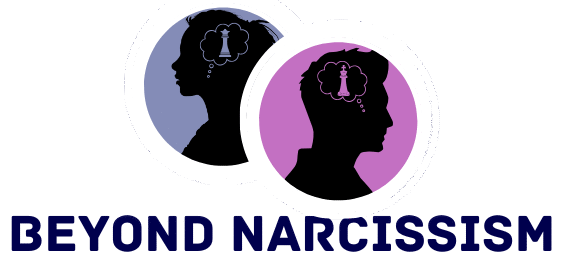In the intricate dance of relationships, emotional nuances often go unnoticed until they manifest in unexpected ways. If you’ve ever found yourself on the receiving end of unexplained anger, you may feel confused and even blame yourself, not realizing there might be underlying issues at play. Understanding these silent symptoms can be a crucial step toward healing and improving communication with your partner. By uncovering these hidden signals, you pave the way to a more compassionate and constructive relationship dynamic.
It’s important to recognize that rage is rarely about the immediate situation. Often, it stems from deeper, unspoken feelings that have been simmering beneath the surface. These silent symptoms can be easily overlooked, leaving you feeling puzzled and unprepared when they finally erupt into anger. In this article, you will learn to identify these subtle signs and gain insights into potential root causes that may be influencing your partner’s behavior.
Our exploration of these seven silent symptoms aims to empower you with knowledge and empathy. By understanding what might be fueling your partner’s rage, you can approach the situation with greater sensitivity and clarity. This awareness not only helps in de-escalating tense moments but also opens up avenues for meaningful conversations and resolutions. Together, we’ll delve into these hidden aspects, providing you with the tools to navigate and nurture a healthier, more understanding relationship.
1. Withdrawal from Emotional Engagement

When a partner begins to withdraw from emotional engagement, it often feels like a subtle shift that can be easily dismissed. This withdrawal might manifest as them being physically present but emotionally distant, leaving you feeling confused and disconnected.
Consider a situation where your partner no longer responds with enthusiasm to your daily updates or avoids discussing deep feelings. This lack of engagement can slowly build tension, as one partner feels unheard and the other feels overwhelmed with unexpressed emotions.
Experts suggest that this emotional withdrawal might be a defense mechanism, protecting them from vulnerability or past hurts. Understanding this can help you approach the situation with empathy rather than frustration, opening a path for healing conversations.
To address this, gently invite them to share their thoughts and feelings, reassuring them of a safe space for open dialogue. Encourage small steps toward reconnection, such as setting aside time for meaningful conversations or shared activities.
By recognizing and addressing emotional withdrawal early, you can prevent it from becoming a justification for unresolved rage. This proactive approach not only strengthens your bond but also promotes a healthier, more resilient relationship.
2. Frequent Passive-Aggressive Remarks

Moving from emotional withdrawal, you may notice your partner making frequent passive-aggressive remarks. These comments often come out as backhanded compliments or subtle jabs that leave you feeling confused and hurt. Imagine a scenario where you’re excited about a new haircut, and your partner says, “Oh, you look different.” It’s not overtly negative, but the lack of enthusiasm can be damaging.
Often, these remarks are a way for your partner to express unspoken frustrations. They might be feeling unheard or unappreciated, and this behavior becomes their outlet. Consider having an open conversation about what might be bothering them. Creating a safe space for dialogue can often dismantle the wall of passive-aggression.
Expert relationship coaches suggest that passive-aggressive behavior usually indicates a deeper issue. It’s important to address these comments directly, but with empathy and understanding. Instead of reacting defensively, express how these remarks make you feel and ask if there’s something specific they need to discuss. This approach encourages honesty and transparency in the relationship.
Ultimately, tackling passive-aggressiveness with kindness can transform your interactions. When both partners feel heard and valued, the need for such remarks diminishes. By addressing this silent symptom, you lay the groundwork for a more open and constructive relationship.
3. Sudden Increase in Silence

When a partner begins to exchange words for silence, it can signal a significant shift in the relationship’s dynamics. This **sudden increase in silence** often leaves the other person feeling confused and disconnected, searching for answers in the quiet.
Consider a couple where one partner suddenly stops sharing their day or engaging in usual conversations. This **withdrawal** can be their way of expressing dissatisfaction or hurt without directly confronting the issue, which can inadvertently justify their anger later.
In relationships, silence can be more than a lack of words—it can represent emotions like disappointment or frustration. One partner might think, “If I say nothing, maybe they’ll realize what they did wrong,” yet this often leads to a **communication breakdown** rather than resolution.
Experts suggest that addressing the root cause of this silence involves creating a safe space for open dialogue. Couples can benefit from **regular check-ins**, where they discuss their emotions and concerns without judgment, fostering understanding and empathy.
By recognizing and addressing the silent barriers in your relationship, you can prevent misunderstandings and nurture a more profound connection. It’s about transforming silence into a channel for growth and mutual respect.
4. Dismissal of Your Concerns

When your partner consistently dismisses your concerns, it can feel as though your feelings are being swept under a rug. This behavior often leaves you feeling invisible and unheard, fostering resentment and frustration within the relationship.
Imagine expressing your worries about finances or household chores, only for your partner to shrug them off as unimportant. Such a reaction sends a message that your perspective and contributions are not valued, which can gradually erode the emotional foundation of your partnership.
Experts suggest that this dismissal might stem from their own insecurities or a lack of emotional intelligence. By understanding the root causes, you can approach the situation with empathy and aim to establish a more balanced dynamic where both partners feel respected.
One effective way to address this issue is through open communication, where you assertively express how their dismissal affects you. Creating a space for both partners to voice their concerns without judgment is crucial in nurturing a relationship built on mutual respect and understanding.
Ultimately, a willingness to listen and validate each other’s emotions can transform how conflicts are navigated. By prioritizing constructive conversations, you lay the groundwork for a healthier and more fulfilling relationship.
5. Constant Justification of Anger

When someone is frequently caught up in the cycle of anger, they often find themselves in a perpetual state of justifying their rage. This can manifest as a continuous narrative explaining why their outbursts are valid, often leaving you feeling confused and invalidated.
Imagine your partner returning home from work, visibly upset, and launching into a tirade about the day. Instead of addressing the behavior, they might say, “I had a rough day, so I can’t help it,” making it seem as if their anger is a natural consequence rather than a choice.
Experts suggest that such justifications are often rooted in a lack of emotional regulation skills. Dr. Emily Harmon, a renowned psychologist, explains that people who frequently justify their anger may not have learned healthier ways to process emotions, which can be addressed through therapy or self-regulation techniques.
Understanding that this pattern is not about you can be liberating. Instead of absorbing the blame, consider discussing how these moments affect you and suggest exploring healthier communication strategies together.
Ultimately, recognizing the pattern of constant justification provides an opportunity for growth. By approaching these situations with empathy and a desire for constructive change, you can foster a more understanding and supportive environment.
6. Unexplained Mood Swings

Experiencing unexplained mood swings in a partner can be confusing and unsettling. One moment, they might be affectionate and loving; the next, they could be distant or irritable without any apparent trigger.
These fluctuations often leave the other person feeling like they’re walking on eggshells, trying to avoid upsetting their partner. In the long term, this behavior can lead to a cycle where the non-angry partner constantly adjusts their actions to maintain peace.
Experts suggest that such mood swings might stem from deeper issues, such as unresolved emotional conflicts or stressors outside the relationship. In these cases, the mood swings are not just random but are often a way of projecting internal turmoil onto the relationship.
Addressing these mood swings requires empathy and open communication. It’s crucial to approach your partner during a calm moment to express how their unpredictable moods impact you and the relationship.
By understanding the root causes and tackling them together, couples can foster a more stable and nurturing environment. This approach not only strengthens the bond but also allows both partners to grow emotionally.
7. Erosion of Shared Decision-Making

In many relationships, the gradual erosion of shared decision-making can silently justify one partner’s rising anger. When one partner starts making all the decisions, from major financial choices to simple weekend plans, it can leave the other feeling marginalized and unheard. This shift often begins subtly, with one partner insisting on handling specific decisions “for the sake of efficiency” or “because they know best.” Over time, this results in a significant imbalance of power and control, fostering resentment and anger.
Consider a couple where one partner decides on all household purchases without consulting the other. This unilateral decision-making often leads to feelings of being unappreciated and excluded from the partnership. Such situations can escalate, with the decision-making partner becoming increasingly irritable when questioned or challenged. The lack of communication and collaboration can ignite rage, as the excluded partner feels their opinions and desires are consistently dismissed.
Experts suggest that the key to avoiding this pitfall is maintaining open lines of communication and prioritizing mutual involvement in decisions. Regularly scheduled discussions can help both partners feel involved and valued in the relationship. These conversations should be approached as opportunities to listen and compromise, rather than to assert dominance or control.
In conclusion, a relationship thrives on equality and shared responsibility, preventing the silent buildup of resentment. By fostering a culture of collaboration, both partners can contribute positively, avoiding the triggers that lead to justified rage. Remember, a strong relationship is built not on who makes the decisions, but on how decisions are made together.
Conclusion: Creating Beautiful Outdoor Spaces
In navigating the intricate dynamics of relationships, recognizing the subtleties that can justify rage is crucial. This article explored seven silent symptoms: unmet needs, past traumas, feeling undervalued, unresolved conflicts, emotional disconnection, lack of communication, and external stressors. Each of these factors can silently fuel anger, yet understanding them can pave the way for healing and deeper connections.
As a proactive step, consider setting aside time this week for an open conversation with your partner about any of these symptoms that resonate with you. This dialogue can serve as a foundation for mutual understanding and growth.
To ensure you have these insights at your fingertips, bookmark this article as a valuable resource. It’s a guide you can return to, whether you’re navigating current challenges or striving to strengthen your bond.
Remember, nurturing a successful relationship is a journey, not a destination. By addressing these silent symptoms and fostering open communication, you’re not just resolving current issues; you’re building a resilient and loving partnership for the future. Save this article now, and take that empowered step towards a brighter, more harmonious relationship.
